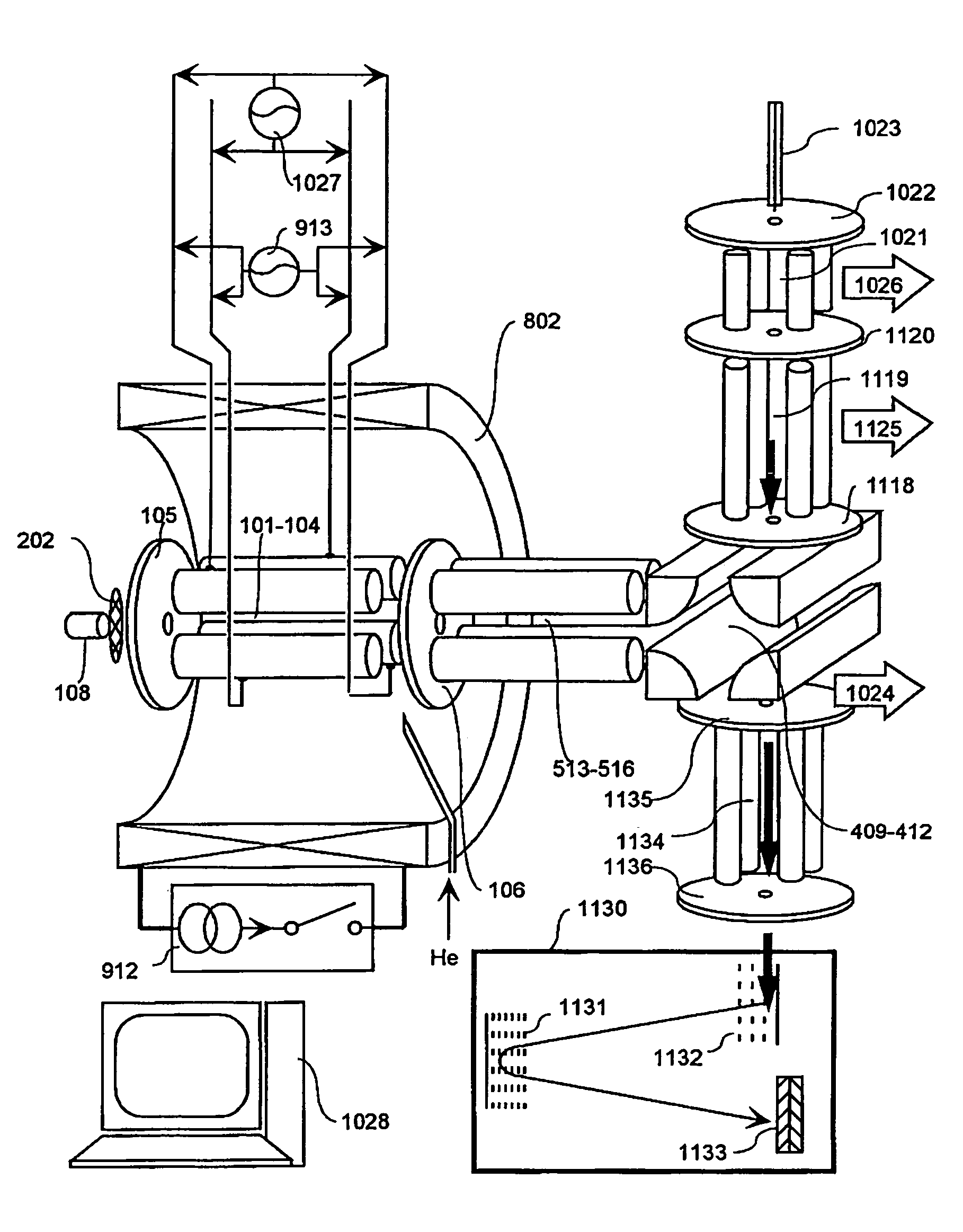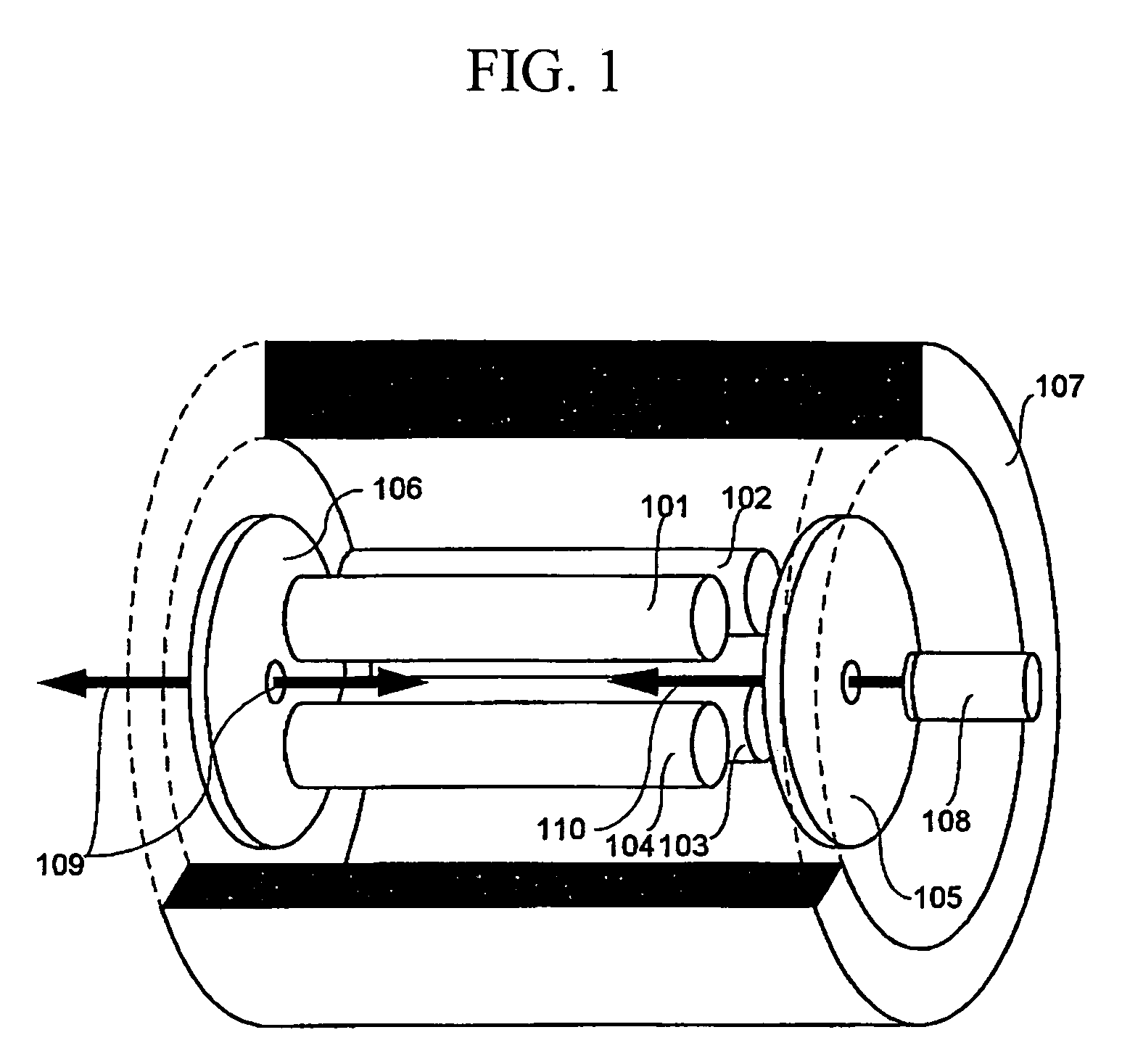Mass spectrometer
a mass spectrometer and mass spectrometer technology, applied in the field of mass spectrometers, can solve the problems of low utilization efficiency, low utilization efficiency of ion, and high speed acquisition of high quality spectra that meets industrial applications, and achieves the effects of speeding up amino acid sequence analysis, speeding up spectral acquisition, and facilitating combination with cid
- Summary
- Abstract
- Description
- Claims
- Application Information
AI Technical Summary
Benefits of technology
Problems solved by technology
Method used
Image
Examples
first embodiment
of Mass Spectrometer Provided with ECD Reaction Unit
[0095]FIG. 10 is a schematic diagram to explain an example of a mass spectrometer in which an ECD cell provided with a magnetic field-generating unit using a solenoid is employed for ECD and CID and this reaction cell is employed for mass analysis. It is a feature that an ion source is provided to one ion inlet of a quadrupole deflector and an ion detector is provided to the other inlet.
[0096]The ECD and CID reaction unit includes the electrodes 101 to 104 forming linear multipole electrodes, an RF power source 1027 to apply an ion trap RF thereto, the AC power source 913 to resonate ions, the wall electrodes 105 and 106, the solenoid coil 802 and the driving current source thereof 912, an electron source 1008 formed of a filament, the helium gas inlet pipe 911, and the quadrupole deflector 409 to 412. In addition to the present ECD and CID unit, a mass spectrometer is formed by further including an ESI ion source composed of a cap...
second embodiment
of Mass Spectrometer Provided with ECD Reaction Unit
[0105]FIG. 11 is a schematic diagram of an example to explain a mass spectrometer in which the ECD cell provided with the magnetic field-generating unit using the solenoid is employed for ECD, and a linear ion trap mass analysis unit and a TOF mass analysis unit are provided. It is a feature that, in addition to the ECD−CID reaction unit having a structure in which the solenoid is a magnetic field-generating means and the quadrupole deflector is provided, the ion source and the linear ion trap mass analysis unit are provided at one ion port of the quadrupole deflector and another mass analysis unit is provided at the other port. For the mass analysis unit, the TOF mass analysis unit with high mass resolution is employed. It is also a feature that molecular identification capability of the present embodiment becomes higher compared with the first embodiment due to high mass resolution of an obtained spectrum. In the present embodime...
third embodiment
of Mass spectrometer Provided with ECD Reaction Unit
[0118]FIG. 12 is a schematic diagram to explain an embodiment of a mass spectrometer provided with an ECD reaction unit with the use of an ECD cell provided with the magnetic field-generating unit using a permanent magnet, the linear ion trap mass analysis unit, and the TOF mass analysis unit. It is a feature that, in addition to the ECD reaction unit having a structure in which the permanent magnet is a magnetic field-generating means and the quadrupole deflector is provided, the ion source and the linear ion trap mass analysis unit are provided at one ion port of the quadrupole deflector and another mass analysis unit is provided at the other port. It is also a feature that a low-cost and simple analyzer structure is provided by employing the permanent magnet. Since control of the magnetic field is not possible, it is difficult to perform CID in the ECD reaction unit. However, it is possible to perform CID by the linear ion trap ...
PUM
 Login to View More
Login to View More Abstract
Description
Claims
Application Information
 Login to View More
Login to View More - R&D
- Intellectual Property
- Life Sciences
- Materials
- Tech Scout
- Unparalleled Data Quality
- Higher Quality Content
- 60% Fewer Hallucinations
Browse by: Latest US Patents, China's latest patents, Technical Efficacy Thesaurus, Application Domain, Technology Topic, Popular Technical Reports.
© 2025 PatSnap. All rights reserved.Legal|Privacy policy|Modern Slavery Act Transparency Statement|Sitemap|About US| Contact US: help@patsnap.com



